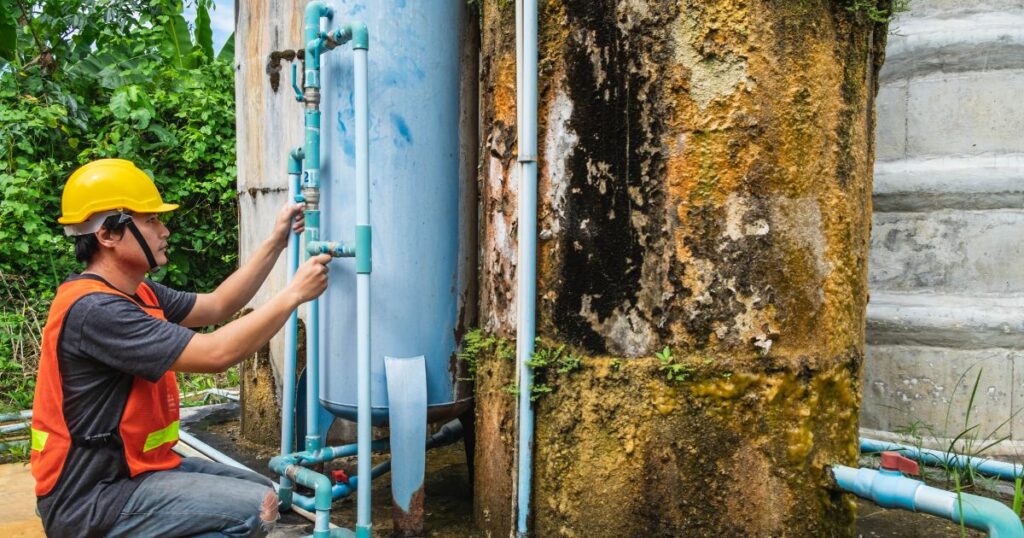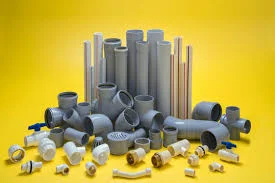Why are HDPE pipes becoming the top choice for underground water mains in Pakistan?
In recent years, High-Density Polyethylene (HDPE) pipes have revolutionized water supply infrastructure across Pakistan. Whether for urban water distribution, rural supply schemes, or industrial use, HDPE pipes are replacing older systems like GI and concrete pipes. Their popularity stems from qualities like corrosion resistance, flexibility, and long service life — all of which are essential in Pakistan’s varying climates, from Karachi’s coastal humidity to Quetta’s harsh winters. For underground water mains, these pipes offer unmatched durability while reducing the need for frequent repairs.
What makes HDPE pipes suitable for underground water mains?
Underground water mains require a piping system that can handle high water pressure, soil movement, and temperature variations without cracking or leaking. HDPE pipes excel because they are:
- Corrosion-resistant: Unlike metal pipes, they don’t rust or react with soil chemicals.
- Leak-proof: Their joints are fused through butt welding or electrofusion, eliminating the risk of leakage.
- Flexible: They can bend without breaking, allowing easier installation around obstacles.
- Lightweight: Easy to transport and install, reducing project costs.
These features make HDPE pipes an ideal choice for municipalities, housing societies, and agricultural projects across Pakistan.
How do HDPE pipes perform in Pakistan’s diverse climates and soil conditions?
From sandy deserts to clay-heavy soils, Pakistan’s geography presents unique challenges. HDPE pipes maintain their structural integrity in all these conditions. In flood-prone areas, they resist water infiltration and ground shifts. In regions with high salinity, they remain unaffected by chemical reactions. Additionally, their UV-stabilized material ensures that even exposed sections won’t degrade under sunlight.
What are the main benefits of using HDPE pipes for underground water mains?
The benefits of HDPE pipes go beyond just durability:
- Long lifespan – Often exceeding 50 years with proper installation.
- Low maintenance – Minimal repair costs compared to steel or concrete pipes.
- High pressure rating – Can handle high-pressure municipal systems without bursting.
- Smooth inner surface – Prevents scaling and ensures consistent water flow.
- Eco-friendly – Fully recyclable and requires less energy to produce than metal pipes.
These factors contribute to reduced life-cycle costs, making HDPE pipes a cost-effective investment for Pakistan’s water infrastructure.
What standards and sizes are available for HDPE pipes in Pakistan?
In Pakistan, HDPE pipes are manufactured according to international standards like ISO 4427 and DIN 8074, ensuring reliability. They are available in various diameters (20mm to 1200mm) and pressure ratings (PN6, PN8, PN10, PN12.5, PN16, PN20). Choosing the right size and pressure rating depends on the water demand and pipeline length.
How are HDPE pipes installed for underground water mains?
The installation process is straightforward:
- Trench preparation – A stable, graded trench is dug to prevent sagging.
- Pipe laying – Pipes are lowered and aligned in the trench.
- Jointing – Usually done by butt fusion welding or electrofusion for a leak-proof seal.
- Testing – Pressure testing ensures there are no leaks before backfilling.
- Backfilling – Soil is compacted carefully to avoid damaging the pipe.
Because HDPE pipes are flexible, fewer fittings are required, which speeds up installation and lowers costs.
Why is HDPE a better choice than PVC or GI pipes for underground mains?
While PVC pipes are cost-effective for low-pressure systems, they are more brittle and less flexible than HDPE. Galvanized Iron (GI) pipes corrode over time, especially in underground conditions, leading to leaks and contamination. HDPE, on the other hand, combines flexibility, strength, and chemical resistance, making it a superior choice for long-term underground applications.
How does using HDPE pipes benefit Pakistan’s water conservation efforts?
Water loss through leakage is a major issue in Pakistan, with some cities losing up to 30% of their water supply due to outdated pipelines. HDPE pipes, with their seamless joints, drastically reduce leakage. By maintaining water pressure and flow, they ensure efficient distribution — a critical factor in a country facing water scarcity challenges.
What is the expected lifespan and maintenance requirement of HDPE underground mains?
HDPE pipes can last over 50 years without major maintenance if installed correctly. Their smooth internal surface reduces sediment buildup, minimizing cleaning requirements. Any damage can be repaired by cutting and welding a new section without replacing the entire line, making maintenance cost-effective.
Are HDPE pipes cost-effective in the long run?
Although the initial purchase cost of HDPE pipes may be slightly higher than PVC, the savings in maintenance, repairs, and water loss prevention quickly outweigh the upfront investment. Municipalities and housing societies in Lahore, Islamabad, and Karachi have reported significant long-term cost reductions after switching to HDPE systems.
Conclusion
For underground water mains in Pakistan, HDPE pipes offer a reliable, sustainable, and cost-effective solution. They outperform traditional materials in durability, leak prevention, and adaptability to various terrains. As Pakistan works towards modernizing its water infrastructure, HDPE stands out as the smart choice for ensuring clean, safe, and efficient water delivery to millions.
Frequently Asked Questions (FAQs)
1. How long do HDPE pipes last underground?
HDPE pipes can last over 50 years with proper installation and minimal maintenance.
2. Are HDPE pipes safe for drinking water?
Yes, HDPE pipes are non-toxic, do not corrode, and meet international drinking water safety standards.
3. Can HDPE pipes handle high water pressure?
Yes, they are available in high-pressure ratings up to PN20, suitable for municipal water systems.
4. Are HDPE pipes more expensive than PVC?
The initial cost is slightly higher, but long-term savings from reduced leaks and maintenance make them more cost-effective.
5. Where can I buy HDPE pipes in Pakistan?
They are available from local manufacturers and suppliers in major cities like Lahore, Karachi, Islamabad, and Faisalabad.



